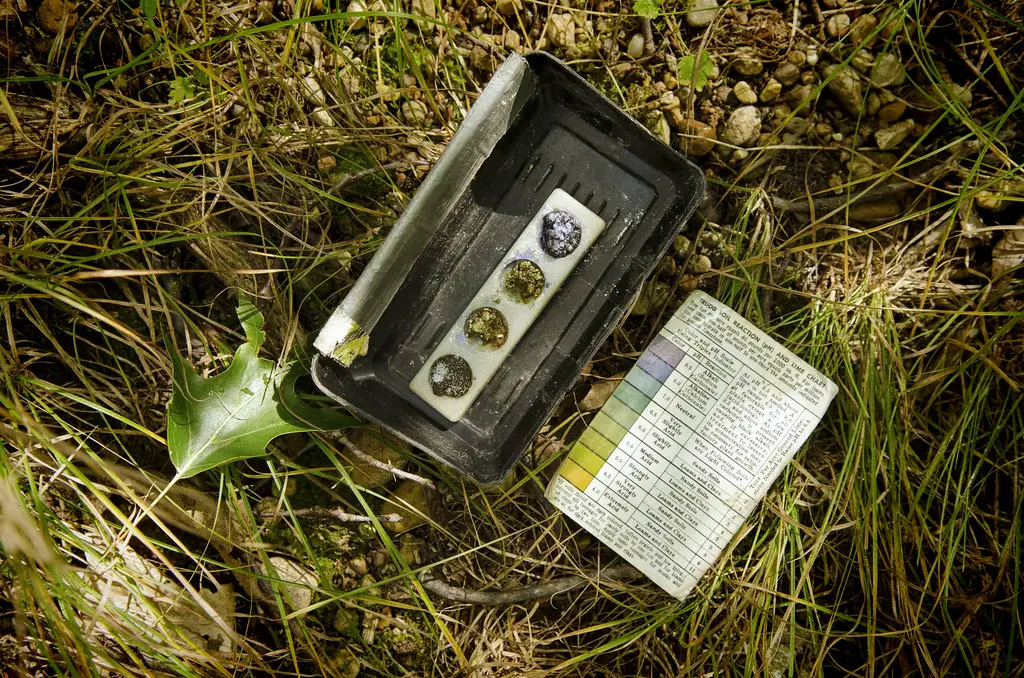Soil pH Determination is a vital soil indicator defined as the negative log of hydrogen ion activity. Since pH is logarithmic, the H-ion concentration in the solution increases ten times when its pH is lowered by one unit.

The pH range generally found in soils varies from 3 to 9. Various categories of soil pH may be arbitrarily described as follows:
- Strongly acid (pH < 5.0)
- Moderately to slightly acid (5.0-6.5)
- Neutral (6.5-7.5)
- Moderately alkaline (7.5-8.5), and
- Strongly alkaline (> 8.5)
The significance of pH lies in its influence on the availability of soil nutrients, the solubility of toxic nutrient elements in the soil, the physical breakdown of root cells, and CEC in soils whose colloids (clay/humus) are pH-dependent and biological activity.
At high pH values, the availability of P, and most micro-nutrients, except B and Mo, tends to decrease (see Box No. 2 for more details).
Acid soils are rare in semi-arid, dry land areas of the world; they tend to occur in temperate and tropical areas where rainfall is substantial; conversely, soils of drier areas are generally alkaline, i.e., above pH 7.0, as a result of the presence of CaCO3, and will visibly effervesce (fizz) when 10% hydrochloric acid (HCl) is added dropwise to the soil.
Most soils in the WANA region have pH values of 8.0 – 8.5. Calcareous soils with gypsum have lower pH values, while those with excess Na have values over 8.5 (sodic soils).
Apparatus
- pH meter with combined electrode
- The reference electrode, saturated KCl
- Measuring cylinder
- Glass rod
- Glass beaker
- Interval timer
- Wash bottle, plastic
Reagents
- De-ionized water
- pH 7.0 buffer solution
- pH 4.0 buffer solution
Procedure
- Weigh 50 g air-dry soil (< 2 mm) into a 100-ml glass beaker.
- Add 50 mL DI water using a graduated cylinder or 50-ml volumetric flask.
- Mix well with a glass rod, and allow to stand for 30 minutes.
- Stir suspension every 10 minutes during this period.
- After 1 hour, stir the suspension.
- Calibrate the pH meter (see Box No. 3 for more details).
- Put the combined electrode in suspension (about 3 cm deep). Take the reading after 30 seconds with one decimal.
- Remove the combined electrode from the suspension, rinse thoroughly with DI water in a separate beaker, and carefully excess dry water with a tissue.
Technical Remakes
- Make sure the combined electrode contains saturated KCl solution and some solid KCl.
- At ICARDA, pH is measured in a 1:1 (soil: water) suspension. For particular purposes, pH can be measured in a saturated soil paste or in more dilute suspensions.
- In some laboratories, pH is measured in a suspension of soil and 1 N KCl or 0.01 M CaCl2.
- The pH measured in 0.01 M CaCl2 is about 0.5 units lower than in water (soil: liquid ratio of 1:2).
- Use a 1:2 or 1:5 (soil: water) ratio for soil samples very high in organic matter.
- The main advantage of measuring soil pH in the salt solution is the tendency to eliminate interference from suspension effects and variable salt contents, such as fertilizer residues.
- Air-dry soils may be stored for several months in closed containers without affecting the pH measurement.
- Air-drying prevents the development of acidity during moist storage.
- 8. Presence of clay may slow the electrode response. To avoid this, thoroughly clean electrodes between samples. If electrode response is slow, clean by immersing in weak HCl solution overnight.
